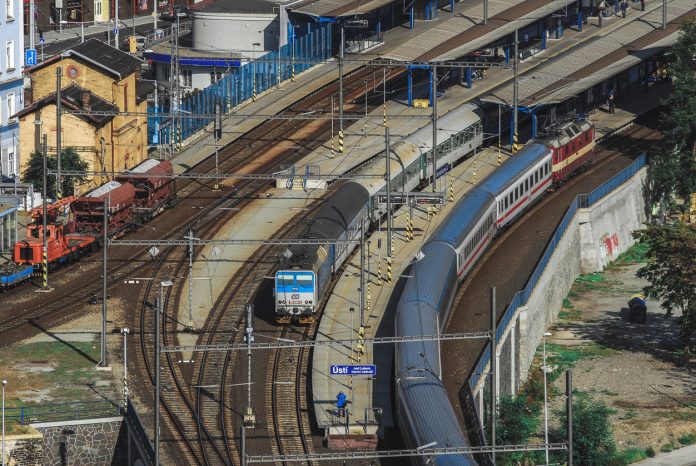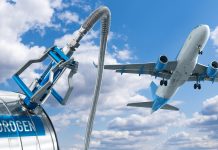Here, Dr Michael Harrison, Senior Lecturer in Economics and Finance, explores the current state of the UK railway system, highlighting the different models in operation and the upcoming changes
The current system of railway franchising in the United Kingdom involves private train operating companies (TOCs) bidding for contracts to operate services on specific routes or regions.
Franchising the UK railway system: The current model
These contracts, managed by the Department for Transport or devolved authorities in Scotland and Wales, are awarded through a competitive tendering process. Successful bidders enter into franchise agreements that specify service patterns, performance targets, and financial arrangements.
Typically lasting between 7 and 15 years, these contracts are thought to combine private-sector efficiency with public-sector oversight. Performance is closely monitored, with incentives for exceeding targets and penalties for failing to deliver, causing delays and poor punctuality. Private train operators have succeeded in attracting more passengers onto the railway since their introduction in 1997. The presence of an internal profit motive led to passenger-focused investment and service enhancement. However, TOCs also faced criticism for complexity, financial instability, and service inconsistency.
Great British Railways (GBR): A centralized future
Great British Railways (GBR) represents a significant shift from the existing franchising model. Announced as part of a comprehensive rail reform in response to various systemic challenges, GBR aims to centralise control and streamline operations. Unlike the fragmented franchising system, GBR will assume responsibility for infrastructure, train routes and frequencies, and fare regulation.
Private train operating companies will continue to run the services but under new Passenger Service Contracts, which emphasise performance-based outcomes rather than bottom-line profit.
Open Access Operators (OAOs): Injecting competition
Open Access Operators (OAOs) play a role in the UK rail network by providing competitive alternatives to the franchised services. Unlike franchised TOCs, Open Access Operators operate without government contracts or any direct government subsidy, relying entirely on commercial revenue. They must obtain regulatory approval from the Office of Rail and Road to ensure their services are more likely to attract new passengers onto the railway rather than solely abstract revenue from other TOCs.
By introducing route-based competition, OAOs often drive improvements in service quality and fare reductions. Examples include Grand Central and Hull Trains, which have successfully operated on the East Coast Main Line, offering passengers additional choices in terms of price and on-board service. fostering a competitive environment that benefits the broader railway system. Also, the addition of more trains which serve a wider range of end-point destinations attracts passengers to the railway system. However, it may be fair to worry that some OAOs are small operators which do not respond well to delays and fleet reliability issues.
London North Eastern Railway (LNER): Piloting a new ticketing system
In between the introduction of Great British Railways, London North Eastern Railway is piloting a new ticketing system designed to simplify fare structures and enhance flexibility. LNER is a TOC which faces heavy competition from three OAOs, so it faces strong incentives to yield, maximise, modernise and improve customer experience and involves several key features. The introduction of single-leg pricing allows passengers to purchase tickets for each leg of their journey separately, offering greater flexibility in travel plans. The simplified fare structure aims to make it easier for passengers to understand and find the best fare options. Price caps ensure passengers are guaranteed the lowest possible fare for their journey; however, there have been cases reported of single fares being four times more expensive under the new system!
Some TOCs are also partnering with platform providers called Seatfrog to monetise seat capacity and maximise their revenues by filling seats that cannot be sold for a higher price. This is not reflected or linked to the main ticketing system, so unless passengers can access the internet and know about this, they can not access the cheapest fares.
What seems to become obvious as one learns more about the ticketing system is that it is unrealistically complex. The average passenger perhaps cannot always find the best value fare easily, especially as platforms such as Seatfrog are, at best, open secrets in the ticketing system. Inconsistencies in the fare system are also well known, there are many journeys where using split fares is cheaper. For example, a fare between London and Blackpool is cheaper if bought as two fares, London to Coventry and then Coventry to Blackpool (no need to change trains). National Rail and the TOCs do not promote the use of Split Tickets, although some third-party retailers do – again, the deal you get involved knowing where and how to buy!
The future under Great British Railways: An opportunity for change
All in all, there is a lack of a guiding mind on the railway; the current railway franchising system in the UK is undergoing significant transformation with the establishment of Great British Railways. This new model seeks to address the challenges of the existing system by centralising control and enhancing coordination. Perhaps the biggest opportunity for Great British Railways is to find a way to even out fares, remove contradictions and offer passengers a simple way to get the cheapest ticket for their journey. The ticketing system is logistically tilted against passengers, its complexity overwhelming and inconsistencies are far too many.
This piece was written and provided by Dr Michael Harrison – Senior Lecturer in Economics and Finance – University of East Londotranspo











